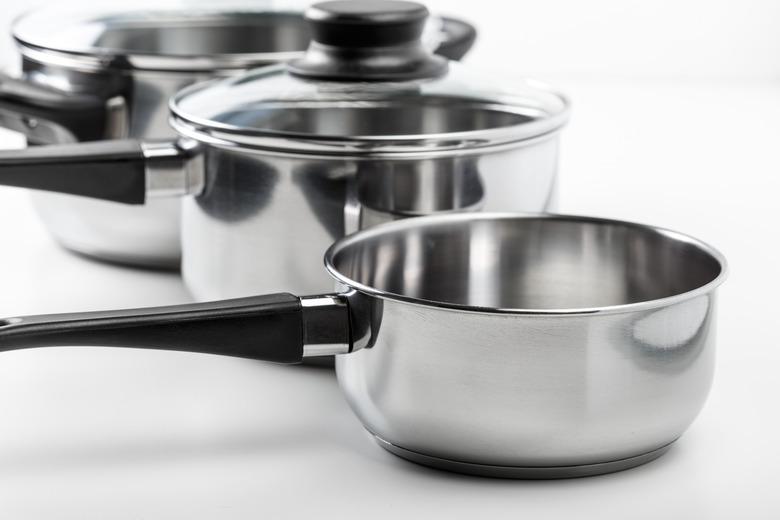How To Remove Carbon Buildup From Aluminum Cookware
A new, gleaming pan just pulled from the box induces such excitement. The grungy pan fished out from under the cabinet and tasked to cook yet another round of rice or family meal doesn't cause as much enthusiasm for home chefs. Carbon and oils can build up on aluminum cookware, making it dull, dingy and difficult to use. Rather than ditch the dirty pots and pans, take the time to clean and restore them to cookware that is a pleasure to use.
Tip
Use common household cleaners and a bit of elbow grease to shine grungy aluminum pans.
How Carbon Collects on Pans
How Carbon Collects on Pans
Pots and pans in a busy kitchen can often get neglected while gently simmering or blasting a boil on the stove. The burned food and leftover burnt bits on the surface of the aluminum pan can be hard to scour completely off the cookware. Overtime, these streaks and uneven spots of burnt oils, meats and organic matter can build up.
Gather the Cleaning Supplies
Gather the Cleaning Supplies
To get a freshly burnt pan back to its original pristine condition, gather some common household cleaners together and go to work. These include:
- Cream of tartar
- Lemon juice
- Distilled white vinegar
- Baking soda
- Dish soap
You will need warm water and a good scouring brush. A nylon scrub brush is a good first defense. Steel wool pads or brushes can be used for more serious baked-on layers of carbon residue.
Cleaning with Cream of Tartar
Cleaning with Cream of Tartar
Clean the pan thoroughly with soap and water to remove any loose bits of food, grease or chips of hardened carbon. Fill the pan with water up to the point where the carbon marks end. Simmer the pan with 1 tablespoon each of cream of tartar, lemon juice and the distilled white vinegar. After simmering for 15 minutes, turn off the heat and leave the pan to cool on the burner.
Scrub thoroughly with a nylon brush. Use a steel wool sponge to take down any stubborn stains. A long-handled nylon brush is good for cleaning the bottom of pans after scouring to remove carbon.
Cleaning Pans with Baking Soda
Cleaning Pans with Baking Soda
A mixture of baking soda and vinegar will remove a buildup of carbon off of pans. Cover the bottom of the pan with baking soda and slowly pour vinegar over the powder until it is bubbling over the carbon stains. Let that sit until all bubbling has ceased and give the pan a good scouring with the baking soda and vinegar mixture.
If burnt spots remain inside the well of the pan, then sprinkle a coat of baking soda over the bottom of the pan. Fill with water and allow to simmer on high, according to Better Homes and Gardens, for 15 minutes.
Using Ketchup to Clean Pans
Using Ketchup to Clean Pans
It may sound odd, but it's a long-standing go-to for shining up grubby pans. The citric acid and vinegar that is packed into every bottle of the tomato-based condiment can clean a burnt pan and shine pots that have been neglected.
Stuck-on food or a pan that has bits of burnt-on or hardened sauce can be removed with a layer of ketchup poured over the top. Leave the ketchup in the pan overnight to allow the acids to work and wash clean in the morning.
The experts at Taste of Home recommend that you test a small spot in a small place where it won't be noticeable if the ketchup leaves a mark. The acid in the tomatoes can be corrosive on some materials.
